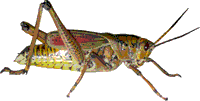Entomology Collections, General

Entomology Papers from Other Sources
Document Type
Article
Date of this Version
2016
Citation
Journal of Medical Entomology, 2016, 1–16. doi: 10.1093/jme/tjw076
Abstract
In addition to serving as vectors of several other human pathogens, the black-legged tick, Ixodes scapularis Say, and western black-legged tick, Ixodes pacificus Cooley and Kohls, are the primary vectors of the spirochete (Borrelia burgdorferi) that causes Lyme disease, the most common vector-borne disease in the United States. Over the past two decades, the geographic range of I. pacificus has changed modestly while, in contrast, the I. scapularis range has expanded substantially, which likely contributes to the concurrent expansion in the distribution of human Lyme disease cases in the Northeastern, North-Central and Mid-Atlantic states. Identifying counties that contain suitable habitat for these ticks that have not yet reported established vector populations can aid in targeting limited vector surveillance resources to areas where tick invasion and potential human risk are likely to occur. We used county-level vector distribution information and ensemble modeling to map the potential distribution of I. scapularis and I. pacificus in the contiguous United States as a function of climate, elevation, and forest cover. Results show that I. pacificus is currently present within much of the range classified by our model as suitable for establishment. In contrast, environmental conditions are suitable for I. scapularis to continue expanding its range into northwestern Minnesota, central and northern Michigan, within the Ohio River Valley, and inland from the southeastern and Gulf coasts. Overall, our ensemble models show suitable habitat for I. scapularis in 441 eastern counties and for I. pacificus in 11 western counties where surveillance records have not yet supported classification of the counties as established.


Comments
This work is written by US Government employees and is in the public domain in the United States.